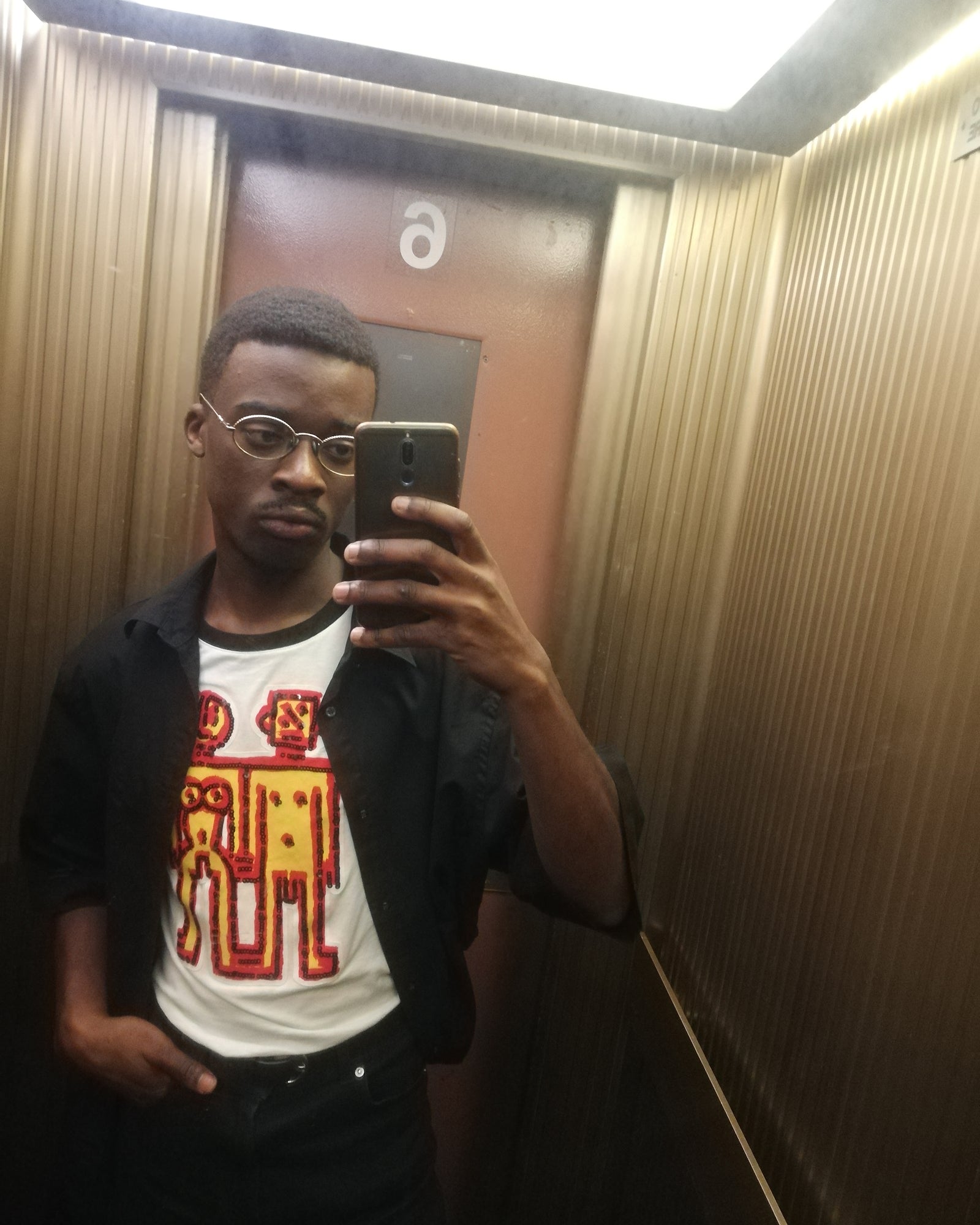
Emmanuel
PPS: Tell us about yourself.
EMMANUEL: I'm Emmanuel, a visual artist focusing on graphic design, collages, and photography. I started in fashion design but shifted to fashion communication because I'm drawn to the visual aspects. I work on assemblage collages with a 3D effect, using the language of clothes. Fashion has strong semiotics, and I'm exploring that through installations and fabric. I'm passionate about graphic design, advertising, and the intimate relationship we have with clothes. I'm also interested in queer theory, black queer topics, and archiving—I'm obsessed with preserving material digitally.

PPS: What sparked your interest and journey?
EMMANUEL: It's been a long journey and still ongoing. My love for storytelling through clothing stems from my upbringing in a religious environment. Sundays were fashion events for my family. I'm the son of a pastor, with six siblings. Although I didn't always fit in, the playfulness of clothing in that context inspired me. It's related to black style, where clothing is expressive.

PPS: What are the main signifiers of black style, in your opinion?
EMMANUEL: That’s an important question. Carol Tulloch's book "Black Style" touches on this. It's about swag—not just what we wear, but how we wear it. It's a special allure.
PPS: Like a disposition.
EMMANUEL: Exactly, it's deeply embedded in us.

PPS: You mentioned graphic design and visual arts. What's your main inspiration in life?
EMMANUEL: I'd say Marlon Riggs, Essex Hemphill, and Julius Eastman have inspired me, especially as I explore the different layers and angles of my queerness as a Black gay man, I am deeply inspired by Jean Tinguely, Fortunato Depero, Bruno Munari, Bauhaus, and Dadaism.

PPS: How has your relationship with fashion evolved throughout your life?
EMMANUEL: I've always been interested in fashion. My eureka moment was in high school with Riccardo Tisci's Fall/Winter '12 collection for Givenchy. It featured men in skirts and leggings, which was transformative for me. Over time, my style has evolved and continues to do so, but at a different pace. I'm more conscious of my taste and how to subvert or play with it. I love queering the way I dress using bold colors and provocative, playful prints or 70s silhouettes.

PPS: How do you pick your own, personal garments? Do you just follow your instincts or is this also a research-based activity?
EMMANUEL: It has to be special in some way. If something is ugly but still captures my attention for its potential, I go for it. It's really about finding unexpected beauty and chic in ugliness most of the time.
PPS: If it has character, it works.
EMMANUEL: Exactly, and I like mixing stereotypes and playing with masculinity and femininity in my style.

PPS: Any favorite designers?
EMMANUEL: JW Anderson, Walter Van Beirendonck, Franco Moschino (forever), Martine Rose, Acne Studios, Craig Green, and the bygone Sies Marjan.
PPS: What's your signature look?
EMMANUEL: I'm very into bold, clashing colors inspired by the audacity of Congolese Sapeurs and the aesthetics of Coupé Décalé. Coupé Décalé was an Ivorian movement that bloomed in the early 2000s. It comprised a music genre, a dressing style, an attitude, and a lifestyle.

PPS: What change would you like to see in the future of fashion?
EMMANUEL: More support for emerging designers in Italy. I wish diversity in fashion was a given, covering body types and opportunities. Less gatekeeping in general and more community focus.

PPS: What are you manifesting now?
EMMANUEL: I'm manifesting an exhibition in October. It will be a big moment, a big step in my life. I’m also manifesting love. I want to be loved.
PPS: Success, money, love!
EMMANUEL: I'm obsessed with love.
PPS: Yeah, you seem like a romantic person.
EMMANUEL: Yeah, maybe too much.
PPS: There's no such thing.
EMMANUEL: I'm also manifesting a more vibrant fashion scene in Milan. It's interesting what you're doing with PPS. Community-driven initiatives.
